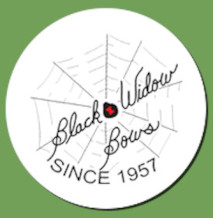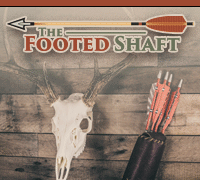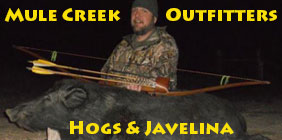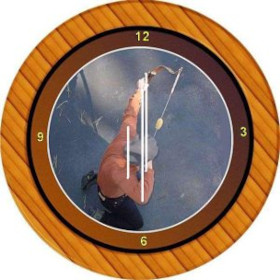There is a site called "Optics4Birding" which you can google- it gives a very easily understood review of every pair of glasses out there- obviously not geared to 'bowhunting per se', but birders need most of the same things we do, including waterproof optics, which interestingly aren't even mentioned in this review of the Leupold Yosemite which I mentioned earlier.
If you're looking at all the great optics mentioned above, you can probably find a good review of them on this site to compare all the features.
Leupold Yosemite Binoculars
Review Highlights
Designed for kids but great first binocular for any age, including seniors
BaK-4 glass prisms, fully multi-coated for increased light transmission and brighter images
Waterproof, compact, very light weight and available in 6x or 8x models
Full Review
Yosemite binoculars are made by Leupold, a well-known American manufacturer that has made excellent and innovative scopes and binoculars for decades. The Yosemites were designed by a Leupold engineer who is a devoted birder, and wanted something suitable for use by his young daughter. As such, they are somewhat unique in the optics market today because they were designed first and foremost for kids. Yosemite binoculars are optimized for kids by being compact and lightweight, having a large focus knob that is easy to manipulate and being specifically made to fit smaller faces, though they will accommodate most adults as well. Additionally, Yosemites are very affordable at about $96 and $112 for the solid color 6x and 8x models respectively. Let us tell you more about why we really like these.
Size, Weight and Design
click image to enlarge
You might assume that such a binocular would be of cheaper quality but in that you would be much mistaken! Yosemite binoculars are made with high-quality BaK-4 glass prisms and are fully multi-coated for increased light transmission and brighter images. The binoculars are a porro prism design, and they are wider than they are long, measuring just 4.5 inches from front-to-back and 6¼ inches wide when fully extended. They fold down to just over 5 inches wide. This means they have a very broad interpupillary range (think of this as the distance between your eyes), and in particular, it is unusually small on the narrow end meaning it will easily fit smaller faces. The Yosemite 6x30 and 8x30 models weigh in on our postal scale at a feather-light weight of 17.0 and 18.5 ounces respectively.
Magnification and View
The 6x30 and 8x30 numbers provide important information about the binoculars. The 6x or 8x is the magnification or “power” provided by the binocular. The 30 refers to the diameter of the objective (big) lenses as measured in millimeters, which gives a rough estimate of how much light they will admit. The lower the magnification, the wider the field of view (the area encompassed within the circle one sees through the binocular). The 8x model offers a 393-foot field of view at 1000 yards, while the 6x version comes in at 420 feet. These properties have several important consequences especially for someone inexperienced with binoculars trying to aim them at something. First, if you can see more of the world around you at a glance, the chances are better that what you were looking for specifically is in view when you lift the binocular. Second, little hands may not hold a binocular as steadily, and a lower magnification reduces how much the image shakes, making it easier for children to see things clearly. The small 30-mm objective tubes or “barrels” are also easier for a child to hold steady.Lastly, the very low weight of these binoculars also helps make them easy to hold steady.
Focusing
The focusing knob is particularly large, and its rubber coating has raised ridges to provide additional purchase, making it easier for small fingers to use. The focus mechanism is pitched quite steeply: these binoculars go from minimum close focus to infinity in about 0.7 turns of the knob. Having less distance to travel to achieve reasonable focus is an advantage in a child’s hands. We measured the Yosemites as having a minimum close focus (the shortest distance at which an object can be sharply seen) of 13 feet. While this is not very close focus by modern binocular standards, the Yosemites have excellent depth of field which may be more important to the young Nature Watcher. Interestingly, the two models have rather different eye relief shown in the table below. The longer eye relief of the 6x Yosemite may be better for user who wear glasses.
Optical Performance
We noted fairly impressive performance in some of the other things we routinely check. Color fidelity was good with no readily discernible bias in color. The image was quite bright for a 30-mm objective, and image quality was excellent too. There was little or no color aberration in the center of the field, even on brightly lit objects. Even at the field edges, color fringing was minimal. The pin-cushioning (a tendency for straight edges to bow inward at the edge of the visual field) was very slight. This would all be pretty normal for a high-quality, expensive optic, but it’s rather impressive in one in this price bracket. Overall, optical performance of this binocular was excellent especially for a binocular of this price class.
Mag x Obj Eye relief Field of view Close focus Design Weight Dimensions
6x30 17 mm 420ft/1000 yds 16.4 ft Porro 17.0 oz. 4.5" x 6.25"
8x30 14 mm 393 ft/1000 yds 16.4 ft Porro 18.5 oz. 4.5" x 6.25"
User Adjustments
In the user-adjustable features, everything is simple and basic on the Yosemites. The diopter is adjusted with a twist ring on the right ocular. A raised ridge on the ring lines up with a white dot on the ocular tube to indicate the position for equal eyes, while plus and minus signs to either side indicate the direction of adjustment. The ring stiffly resists movement to help hold its place. The eyecups adjust between two positions with a helical counter-clockwise twist to raise them. There’s nothing fancy here, but it is all functional and practical.
Accessories and Colors
Typically, porro-prism binoculars aren’t sealed, so most are not waterproof, but Leupold claims the Yosemites are “absolutely waterproof” and warranties them as such. The rain guard is the same kind that we’ve seen again and again: a pair of soft rubber cups joined by a flexible bridge region. The strap threads through a complete bracket on the left side and a gapped one on the right, so that it can be readily detached and swung free if the user prefers that. The fit of the rainguard is tight enough that it is not readily dislodged even when inverted and shaken, but it goes on readily. In other words, it’s about perfect. The ocular lens caps are made of harder rubber and their fit isn’t as secure. These will dislodge easily and be lost in the field, so their primary function is limited to protecting the lenses when putting the binocular in its case. Had they been made out of the same rubber used in the rain guard, they might have been a bit more useful, but overall, it’s a very minor point. The strap is the usual inch-wide, padded leather and nylon cord affair. The strap fits into recessed lugs at the corners of the objective tubes where they won’t come into contact with the hands, a nice bit of design. In a binocular this light, the strap has little impact on user comfort, and if it’s an issue, there are plenty of comfortable straps and harnesses available. The rubber armoring is comfortable in the hands, providing a secure grip without adding too much weight, a nice compromise overall. Lastly, the case is a simple padded vinyl affair with enough room to easily house the optic, and a flap with a Velcro closure that adequately covers the binocular. The Yosemite 6x30 and 8x30 models are available in a broad array of colors as shown in the chart below.
Black Dark Earth Natural Mossy Oak Treestand Mossy Oak Pink Mossy Oak Blaze
Our Conclusions
Clearly Leupold made a decision to hold the cost down on minor design issues while providing better quality optics, and in this, they succeeded very well. Interestingly, while it’s clear that this binocular was designed with kids in mind, kids may not be the only users who will like it. The compact, lightweight design and the strong optical performance at this very low price give the Yosemites a broader appeal than they might otherwise have. This is a great first binocular for a beginning birder of any age. Incidentally, all the properties that make them ideal for kids or beginners also make them a great binocular for more elderly users. We wish we’d had starter binoculars this good when we first began looking at birds!














